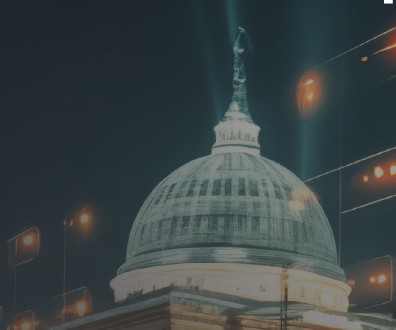Why NASA thinks a supercomputer on the moon might not be pure fiction

NASA's Deep Space Network is getting overloaded, with missions already competing for time and bandwidth, and the situation will only get worse.
Earlier this month, Southern California University grad student Ouliang Chang proposed that we begin the huge undertaking involved with building a supercomputing facility on the moon. And while that might seem like science fiction, NASA may actually be interested in exploring this idea.
Putting a permanent facility on the moon may be a bit of a stretch, but NASA has been thinking about upgrading its Deep Space Network into a true Internet in space since at least 2009.
The current Deep Space Network supports space missions exploring the solar system and some Earth-orbiting missions. Its backbone consists of several large dish antenna arrays at three locations approximately 120 degrees apart on Earth. They are located at Goldstone, Calif., in the Mojave Desert; near Madrid, Spain; and near Canberra, Australia.
The problem, and hence the possible need for Chang’s moon base, is that space is getting too crowded to process all the data coming from the varous probes, satellites and robots we have wandering the solar system. Missions are already competing for time and bandwidth, and the situation will only get worse.
Each time a new space ship launches, it’s like adding a new client to the network. The moon base idea would be like adding a new router and server to that network, which would accept signals from space, store them, process them if needed and then relay the data back to Earth as time and bandwidth allows.
Robots based on other planets are under even more constraints than satellites, since the distance between Earth and, say, Mars, is constantly changing. A robot such as the Curiosity rover needs to use orbiters around Mars to relay its signals, which can only be done during certain times when everything lines up just right -- and that’s just the first link in a long chain the data has to follow over millions of miles back to Earth.
During those limited times, the space Internet needs to be open to accepting Curiosity’s signal, or a bottleneck back on Earth could cause valuable data to be lost.
NASA has known about this potential problem for some time and proposed launching a Mars Telecommunications Orbiter back in 2005, which would have provided a robust network for all Mars-based craft to send their signals back to Earth. That project was cancelled in favor of the Glory satellite mission, which was designed to study climate change on Earth, but which sadly was destroyed on launch due to a rocket malfunction.
Chang’s proposal is somewhat difficult in scope. He wants to put a supercomputer data center inside a moon crater, facing deep space. The crater would protect the computers in the data center from most solar radiation and the heat of the sun. It would in fact be permanently shadowed. He proposes deploying antennas using inflatable balloons, and using the cold environment of the dark side of the moon to cool the computers.
He notes a few interesting problems, including the need to detect incoming asteroids. The moon has no atmosphere for them to burn up in, as does Earth, so the antennas would have to retract when an asteroid gets close. He also notes that the facility could either be manned or unmanned. I wonder how much a job as the tech support person of the moon would pay?
To call Chang’s proposal bold would be an understatement. There may well be other ways of getting the same thing done, such as with a series of spaceships like the canceled Mars Orbiter. Also, improving the ground network by using arrays of smaller antennas instead of a few large dishes could increase available bandwidth without needing to head into space.
But as we continue to reach out into that dark sea known as space, conquering both it and our oceans of ignorance, we will need to have bright eyes and good technology, or we won’t journey very far.





